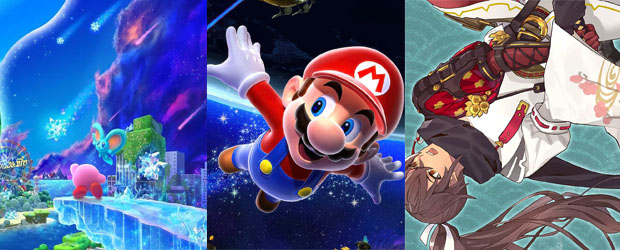Switch to: German
Worthwhile upgrade or a simple re-labeling? Let’s see how Super Mario Galaxy 1+2, Rune Factory: GoA and the latest Kirby game fare on Switch 2.
An increasingly large number of games receive upgrades from Nintendo Switch to Nintendo Switch 2. While some upgrades are free, quite a few will cost you €19.99/£16.99/$19.99 for the corresponding Nintendo Switch 2 Edition which usually features new content or a reduced fee if the Switch 2 version only contains improvements on the technical side. We’ll take a look at all three variants below, starting with the cheapest upgrade.
Super Mario Galaxy 1+2
written by Patrick
In celebration of Mario’s 40th anniversary, Nintendo has decided to reissue the two Wii games Super Mario Galaxy 1 and Super Mario Galaxy 2 for Nintendo Switch. The two fan-favourite platformers were released in 2007 and 2010, respectively, and Galaxy 1 already made its way to Nintendo Switch earlier as part of the 35th anniversary of the beloved plumber. Super Mario 3D All-Stars, released in September 2020, included the three 3D Mario games Super Mario 64, Super Mario Sunshine, and the first Super Mario Galaxy. Sales of the collection, however, were discontinued just six months following its release, disappearing both from eShop and retail shelves in March 2021. For this new bundle, Super Mario Galaxy has also been upgraded compared to the 3D All Stars version.
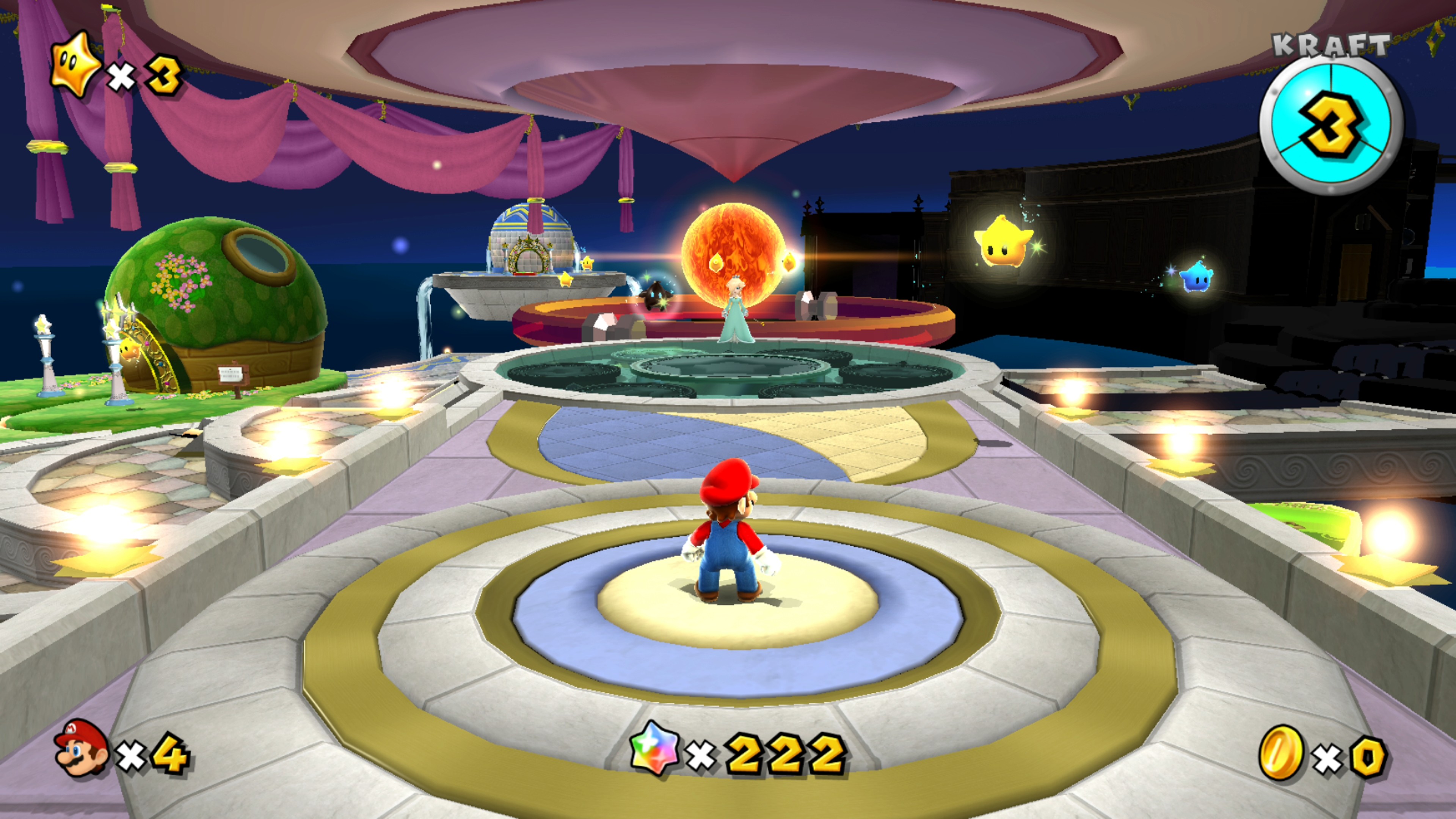
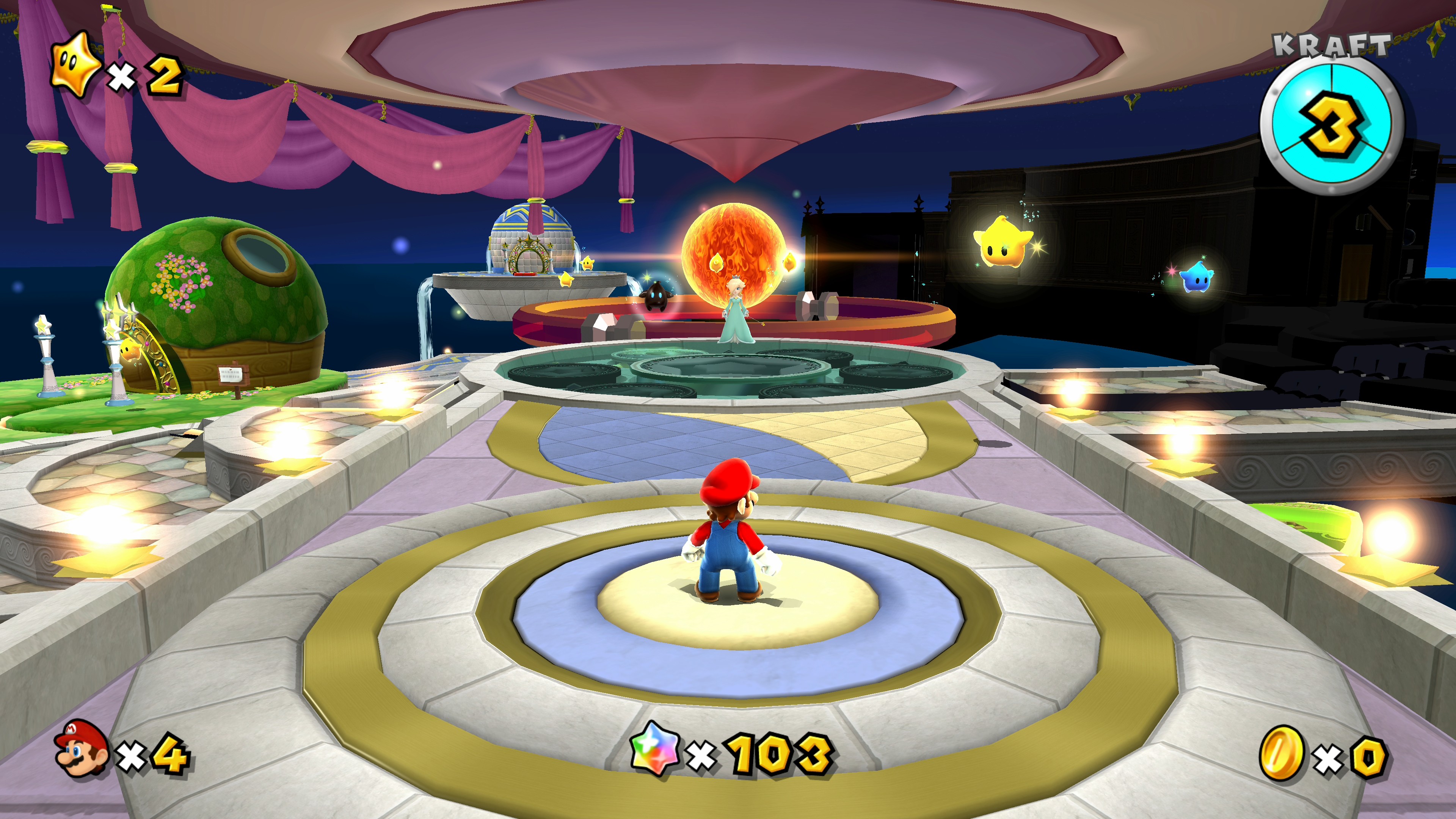
Download the screenshot on the left-hand side | Download the screenshot on the right-hand side
If you purchase Super Mario Galaxy 1+2 either individually from eShop, as a bundle digitally or on a single retail cartridge, two separate icons will appear on your Nintendo Switch home screen. Both titles originally utilized Wii Remote motion controls, which is simulated in several ways on Nintendo Switch. In TV mode, you use both Joy-Cons to control Mario and simultaneously collect star pieces or use Yoshi’s tongue. If you play Super Mario Galaxy 1+2 in handheld mode, you either use the console’s gyroscope sensor and tilt the cursor to the desired target, or you make use of the touchscreen. While simulating the Wiimote with the Switches’ Joy-Cons works flawlessly in docked mode without any annoying input lag, we simply couldn’t get used to the two input options available in handheld mode. While using the touchscreen, we can’t use the face buttons to jump and constantly tilting the console feels distracting. Both are workarounds that work reasonably well, but for the best experience, we recommend using TV mode. Another player can join in at any time and try the Switch 2-exclusive mouse controls, which involve placing the Joy-Cons horizontally on a lot of different surfaces.
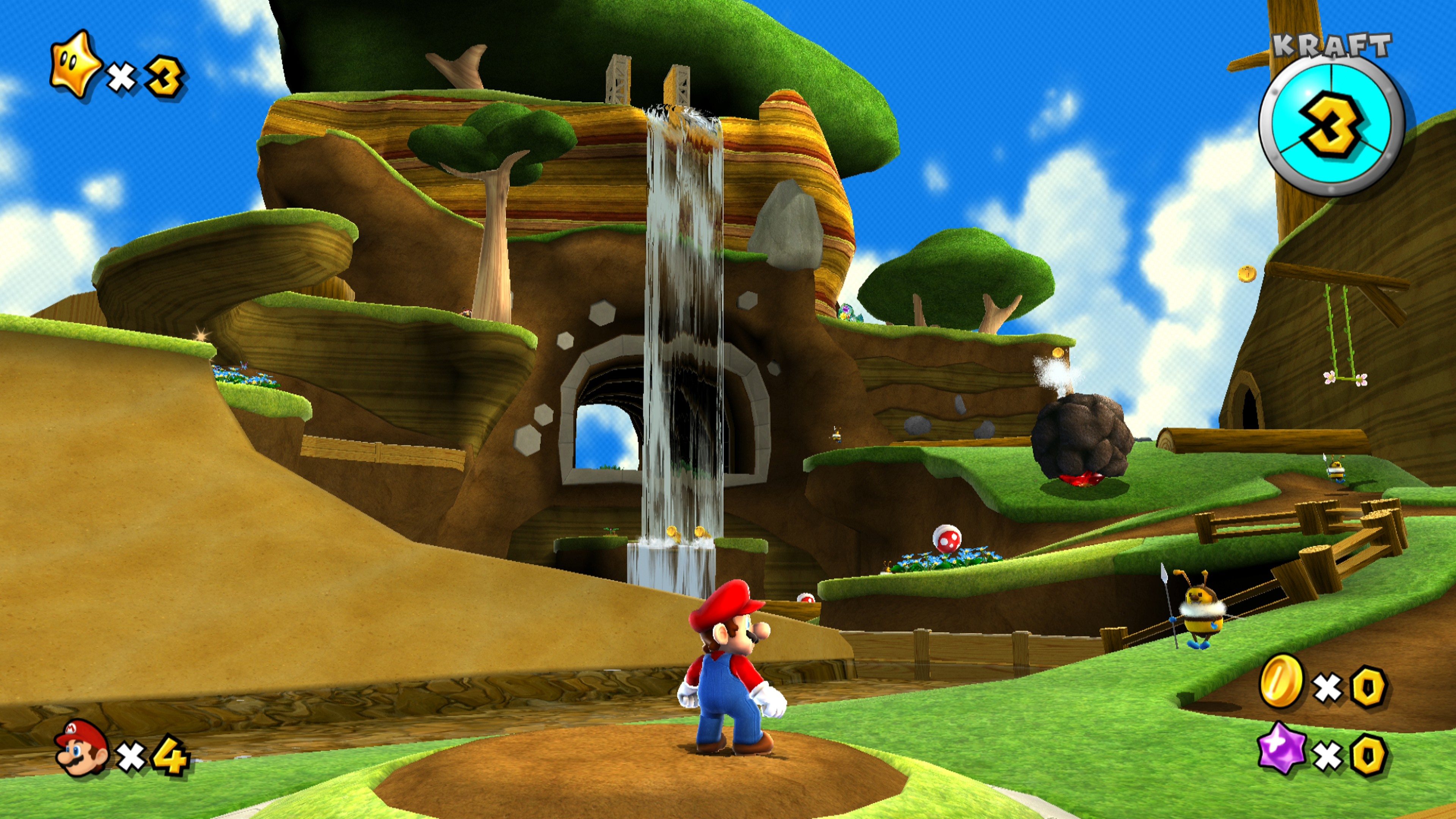
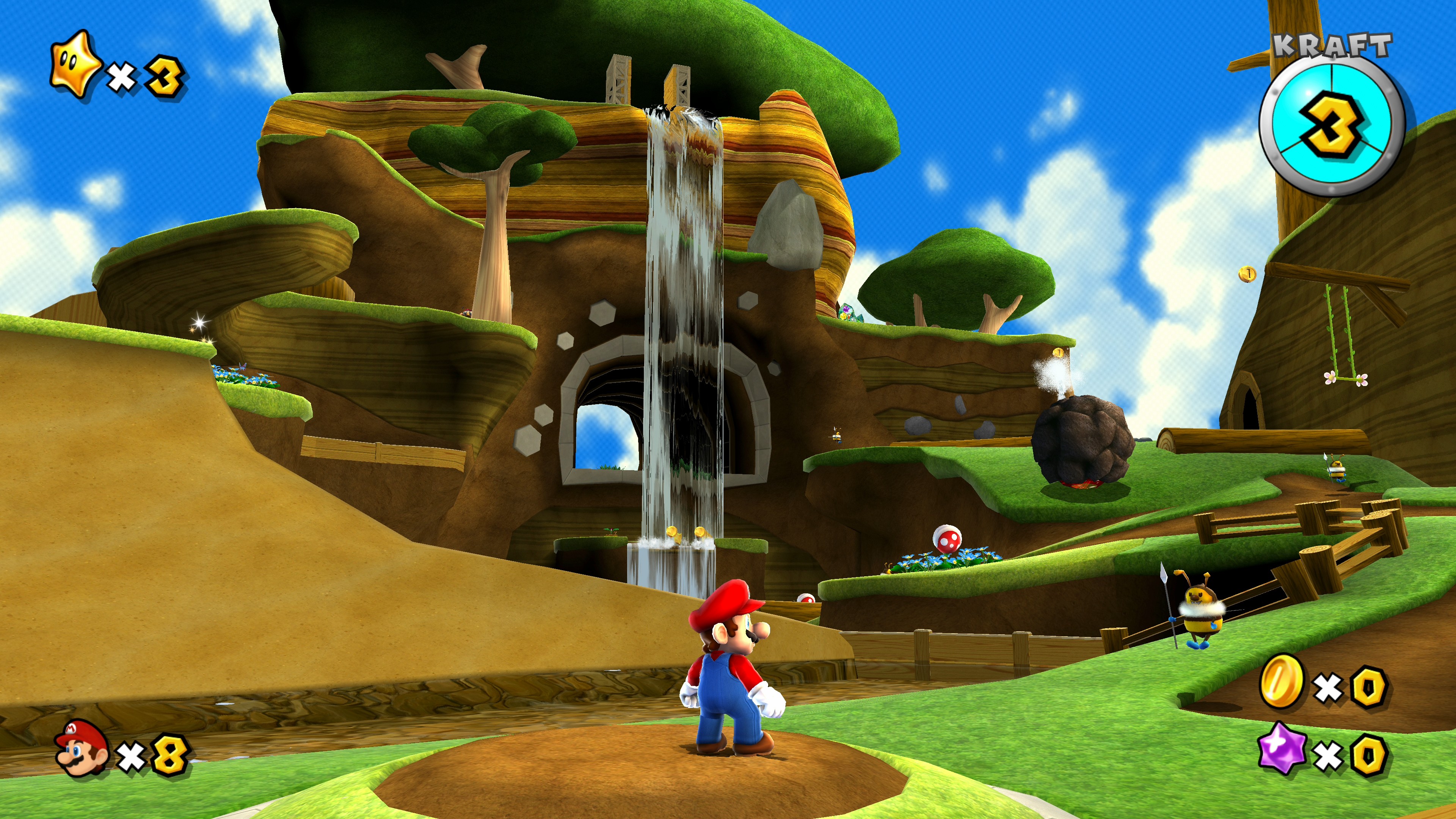
Download the screenshot on the left-hand side | Download the screenshot on the right-hand side
Let’s take a look at the technical side of Super Mario Galaxy 1+2. While the games run in a dynamic 1080p resolution in TV mode on Nintendo Switch, those who have already upgraded to Switch 2 will be pleased to know they can play these classics at a native 4K resolution. In handheld mode, the resolution drops somewhat, but the games still look pretty sharp on both screens. Oddly enough, the HUD is limited to 1080p on both consoles, which should’ve been upgraded for Switch 2 in TV mode. The difference in resolution between the two Switches is particularly noticeable on large screens. The shimmering of edges, as there is no anti-aliasing whatsoever on both systems, is particularly noticeable on Switch 1. Both Switches benefit from sharper textures and improved texture filtering compared to the 3D All Stars version. While surfaces such as grass, rock formations, and sand are now significantly more detailed, both games naturally show their Wii heritage. We found the pop-in of distant characters and shadows less distracting on Switch 2 than on its predecessor. Both consoles struggle with compression artifacts and color banding in the partially brightened cutscenes. This somewhat detracts from the otherwise high-quality visuals and coherent look both games have.
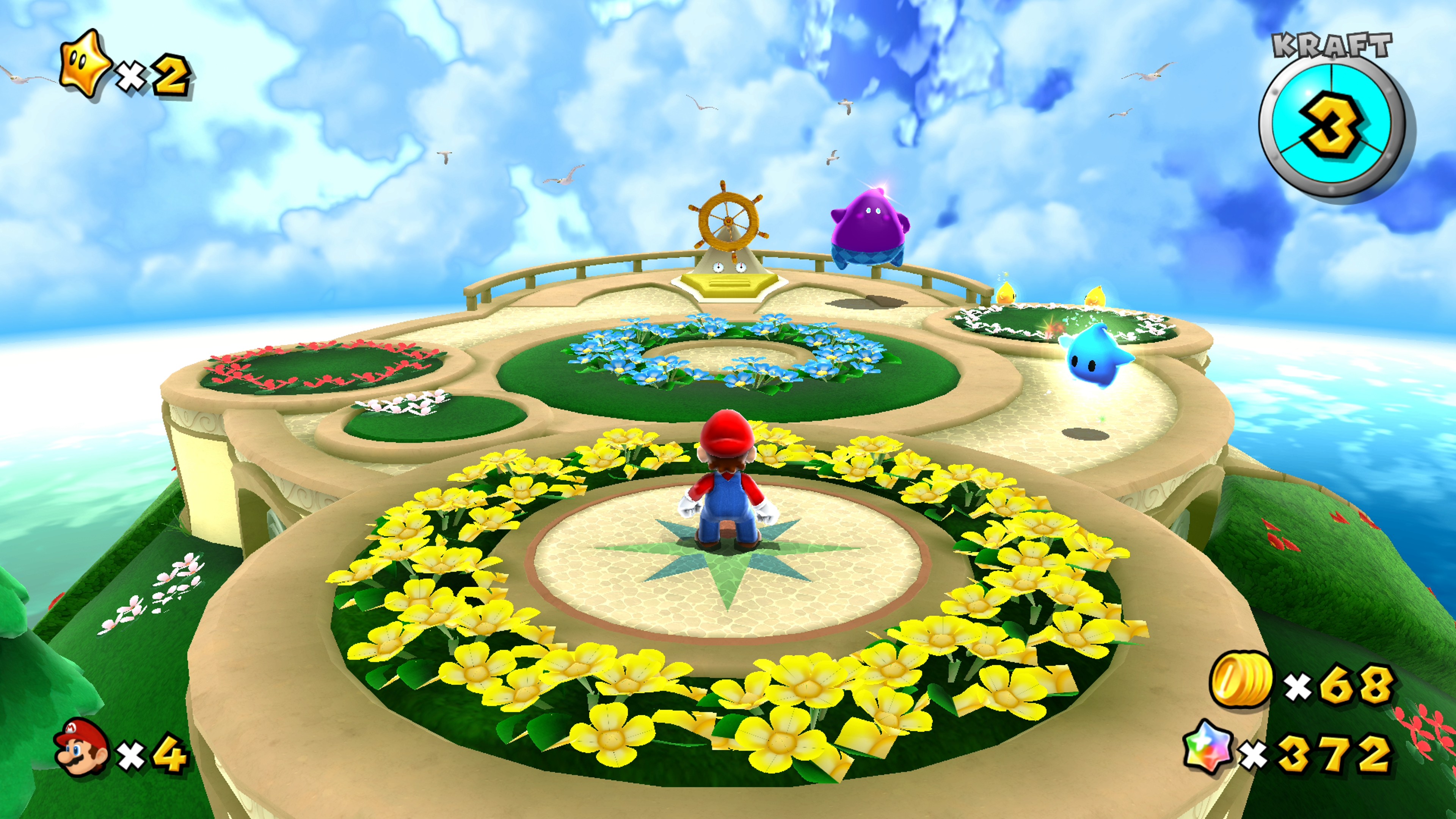
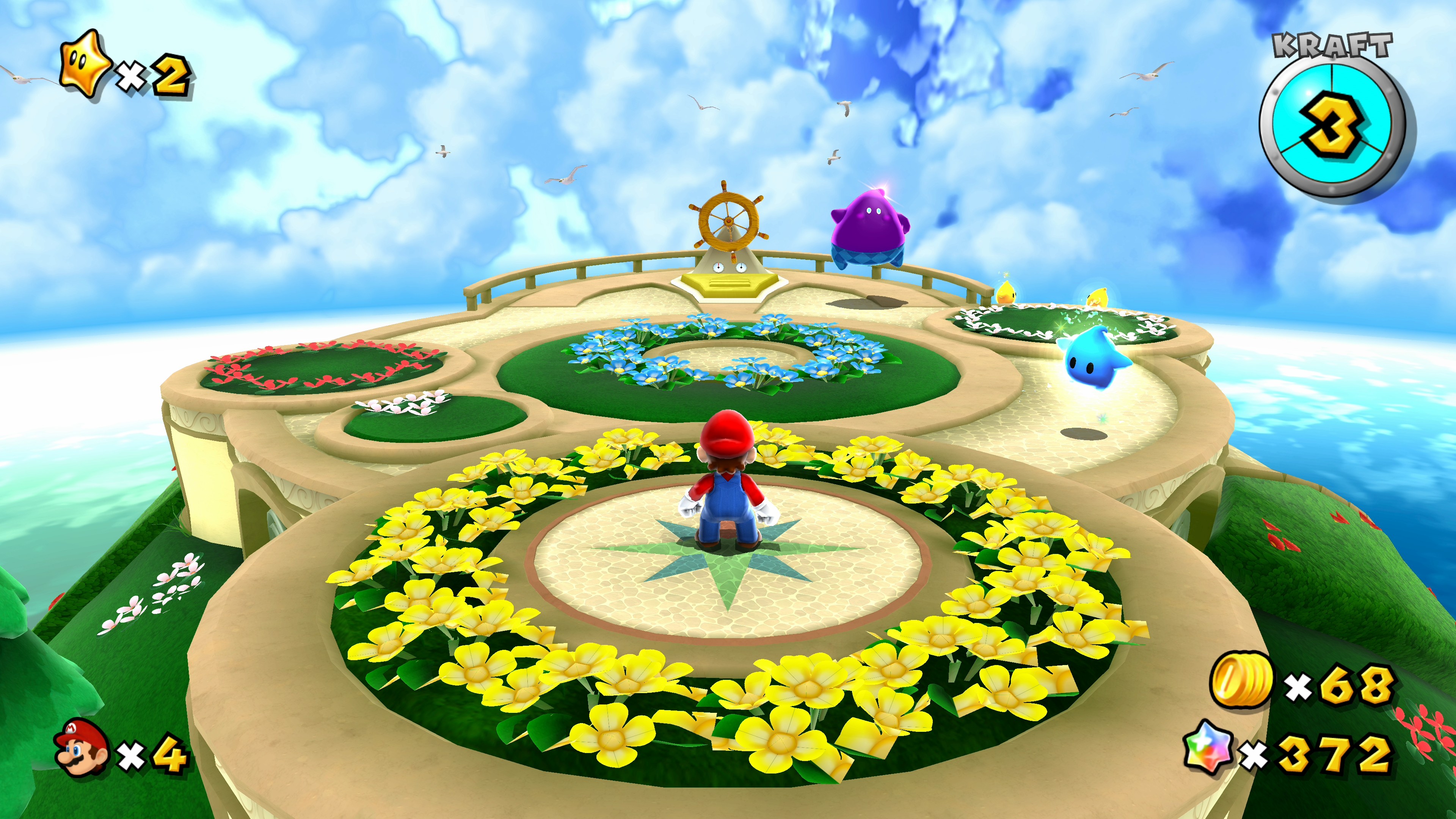
Download the screenshot on the left-hand side | Download the screenshot on the right-hand side
While you drop from one planet to another, the frame rate stays stable. Super Mario Galaxy 1+2 runs at a smooth 60 frames per second on both consoles, regardless of the mode you opted for and of how much is happening on screen. Unlike on Wii, the frame rate doesn’t drop even in the elaborately designed Honeybloom Galaxy in Super Mario Galaxy 2, where we acquire our first costume and Mario flaps his wings through the beautifully designed levels. We only notice a few stutters during scene transitions, but these are hardly noticeable.
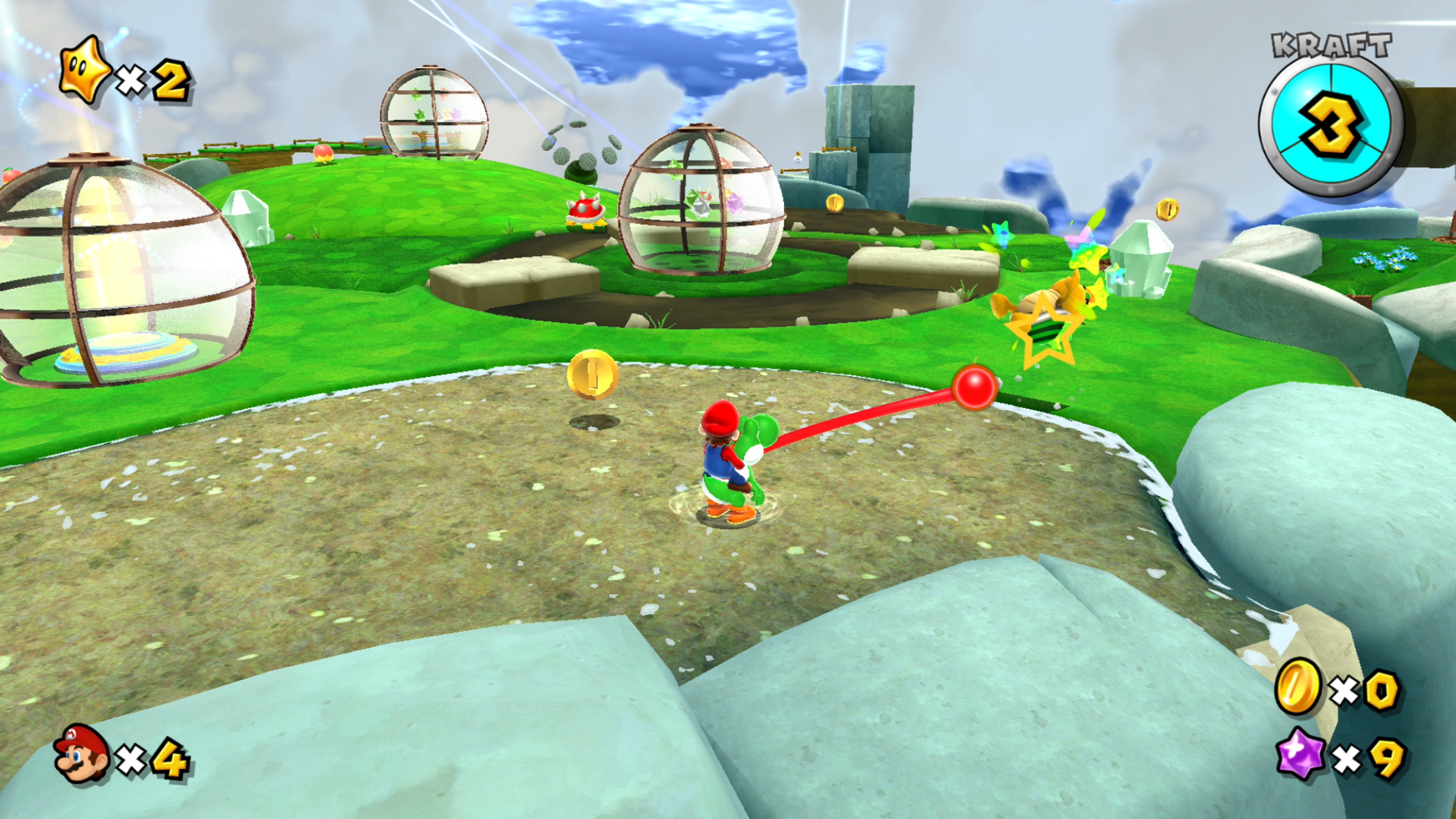
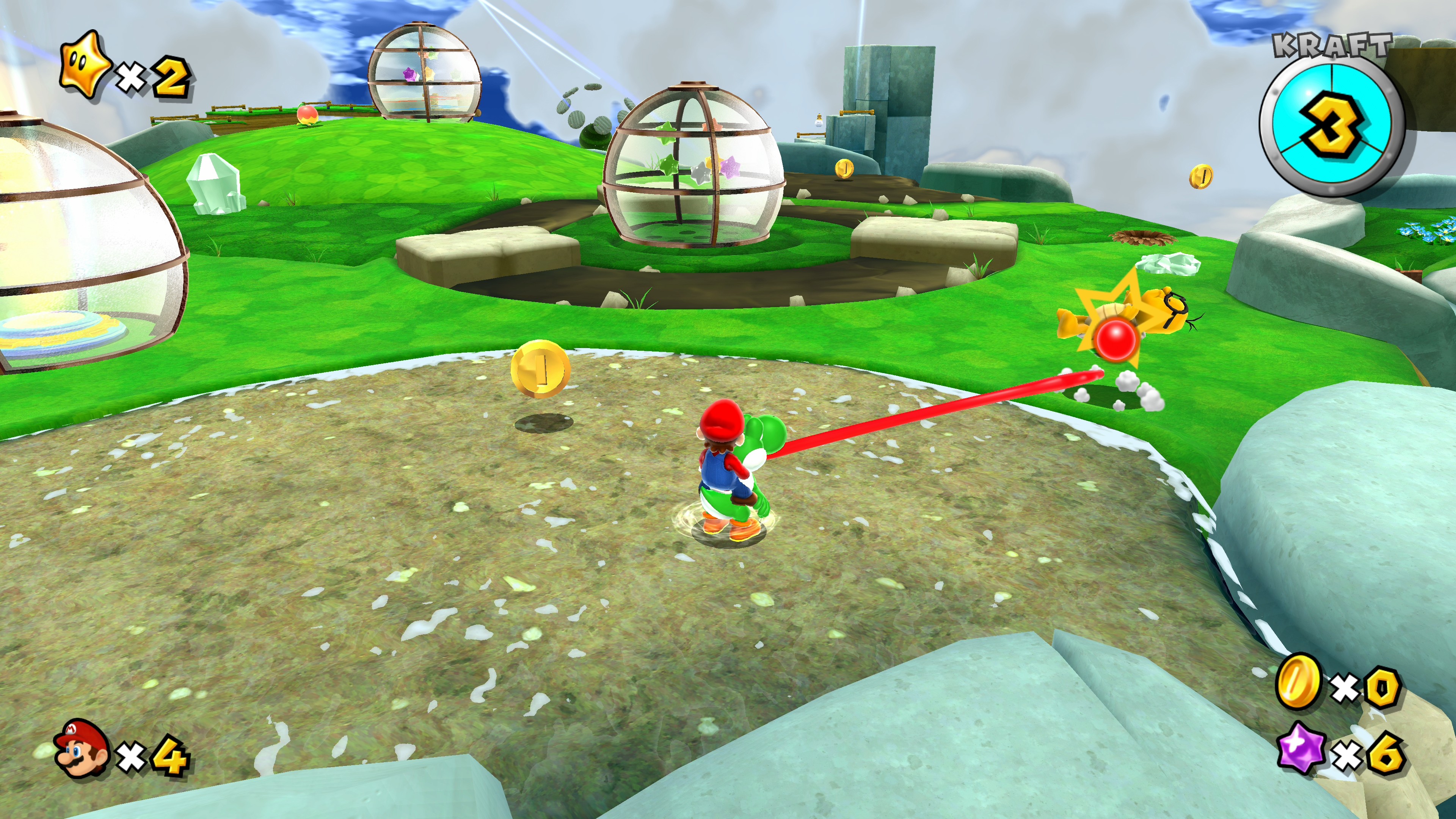
Download the screenshot on the left-hand side | Download the screenshot on the right-hand side
Super Mario Galaxy 1+2 is a fantastic reimagining of two fan-favourite platformers that remain part of the absolute pinnacle of the genre. This new edition lets you experience the games as they originally played on Wii – especially in TV mode and without having to set up an infrared bar. The upgraded graphics make these aesthetically pleasing games shine with nice particle effects, smooth animations, detailed character models, and slightly sharper shadows. Naturally, Super Mario Galaxy 1+2 can’t hide the fact that they are 18 and 15-year-old games, respectively. In handheld mode, it’s a bit awkward to play both games due to the lacklustre implementation of the touchscreen and gyro function. If you’re not too bothered by this and plan on playing Super Mario Galaxy 1+2 primarily in TV mode, go for these excellent platformers. While the bundle costs €69.99/£58.99/$69.99, each game is available on eShop for €39.99/£33.99/$39.99. The Nintendo is charging €10/£10 more for retail version in Europe, it’s already available at select retailers well below this asking price. The game is upgraded for free to the Nintendo Switch 2 version once you download it or insert the game’s cartridge.
Rune Factory: Guardians of Azuma – Nintendo Switch 2 Edition
written by Isaac
Rune Factory: Guardians of Azuma ended up being in a weird spot for the franchise. It’s the first spin-off entry in over a decade, comes after the messy Rune Factory 5, and even ended up being a Nintendo Switch 2 launch title. It has the hopes of people looking for improvements over 5, longtime fans, and new Switch 2 owners that might not known anything about the franchise.
Taking place in the eastern nation of Azuma some time after Rune Factory 5, you once again play as an amnesiac (a recurring aspect of the franchise) who must save the world via their unique powers as an Earth Dancer. Guardians of Azuma, following the more experimental nature of the non-numbered entries, adds in town building elements at the cost of simplifying mechanics like crafting and farming.
Having been a last minute announcement for the Switch 2, this version of Rune Factory: Guardians of Azuma is actually a solid improvement over the Switch release. You get a noticeable bump in resolution and framerate across docked and handheld modes, along with more minor changes like increased foliage and reduced pop-in.
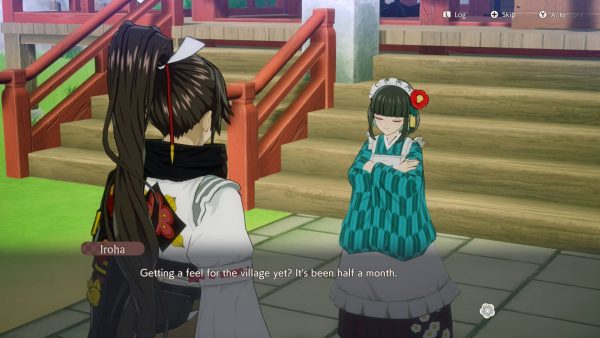
The anime art style used for characters already held up well on the Switch’s lower resolution, and scale up well for the Switch 2. Environments are less impressive, often making use of simplified textures and minimal clutter. You’ll also occasional get some drops below 60fps while exploring open areas, though it nowhere reaches the sub-30 seen on Switch 1.
As for the game itself, it’s a mixed bag. The story and events are now fully voiced, which goes a long way in making cutscenes more engaging. While obviously themed around Japan, there’s also an excellent English voiceover (I’d even go as far to say that some characters sound better dubbed).
But the story runs out of steam midway through, once you’ve been acquainted with each of the villages you end up managing. Characters make brief appearances before being sidelined, and certain plot points abruptly end with little fanfare.
There’s also very little challenge in either combat or village building. The latter requires very little management, and the stats you get from building up the villages makes combat a breeze. Aspects like farming are almost entirely automated now as well, removing something that is usually relatively important in the main games.
Still, Rune Factory: Guardians of Azuma on Switch 2 shows the obvious leap in specs between the Switch and Switch 2 thanks to the vastly improved framerate and resolution. Here’s hoping Rune Factory 6 takes on some of what works in this title, while bringing back everything that makes the mainline games so interesting.
Kirby and the Forgotten Land – Nintendo Switch 2 Edition + Star-Crossed World
written by Patrick
In March 2022, Kirby and the Forgotten Land was released – the first 3D Kirby game with an explorable world. The unique selling point of this title was Kirby’s Mouthful ability in devouring all sorts of objects to take on their properties. This allowed the charming pink blob to complete a timed challenge as a race car, use cracks in the world in the form of a pylon, and climb seemingly unattainable heights by turning into a staircase. The Nintendo Switch 2 Edition is available both physically and digitally for €79.99/£66.99/$79.99 and if you own the Switch 1 version, you can upgrade for €19.99/£16.99/$19.99. It doesn’t only offer technical improvements such as doubling the frame rate (arguably the focal point of this upgrade) and improved anti-aliasing, but also twelve additional levels as part of the included Star-Crossed World expansion.
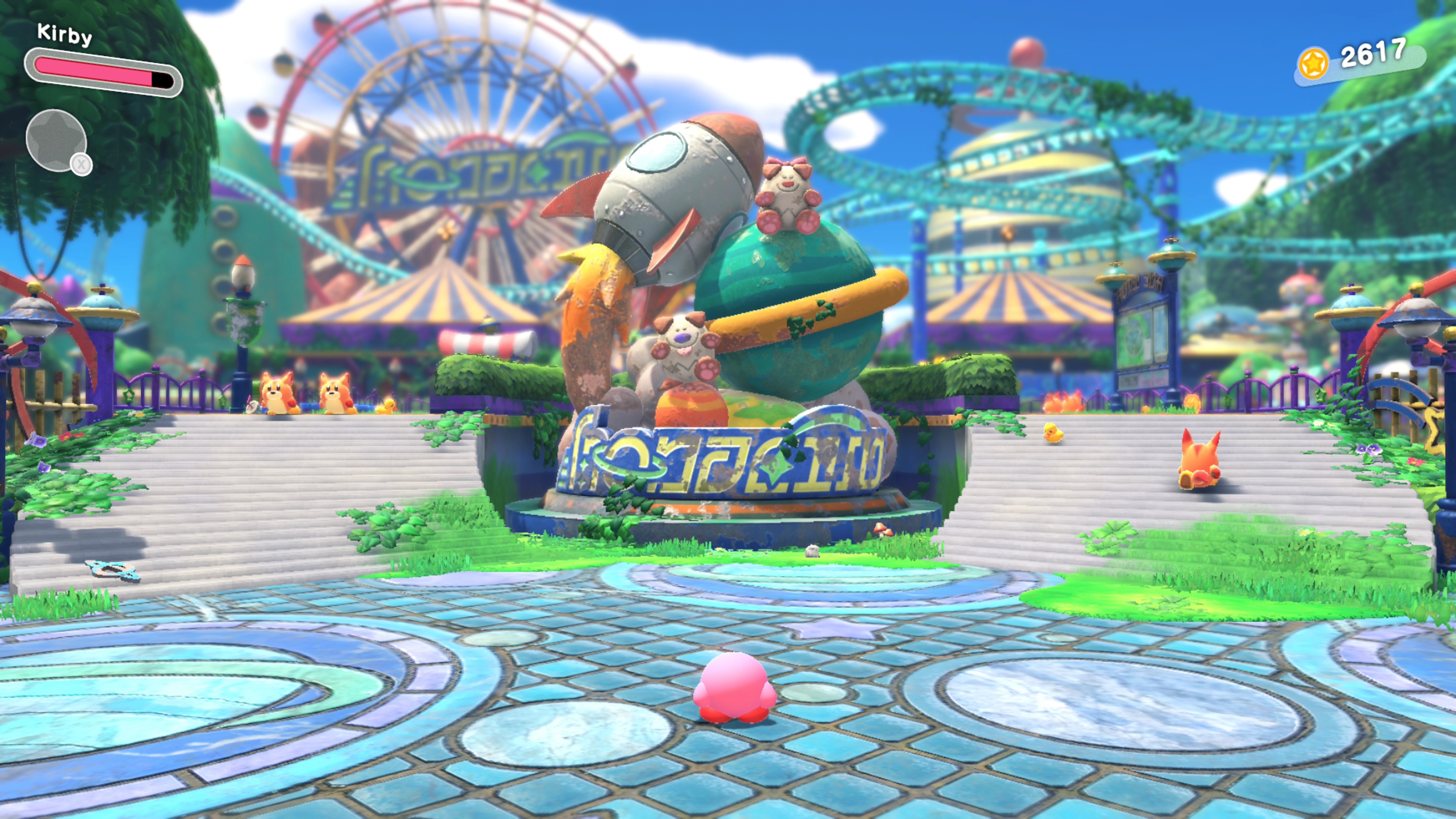
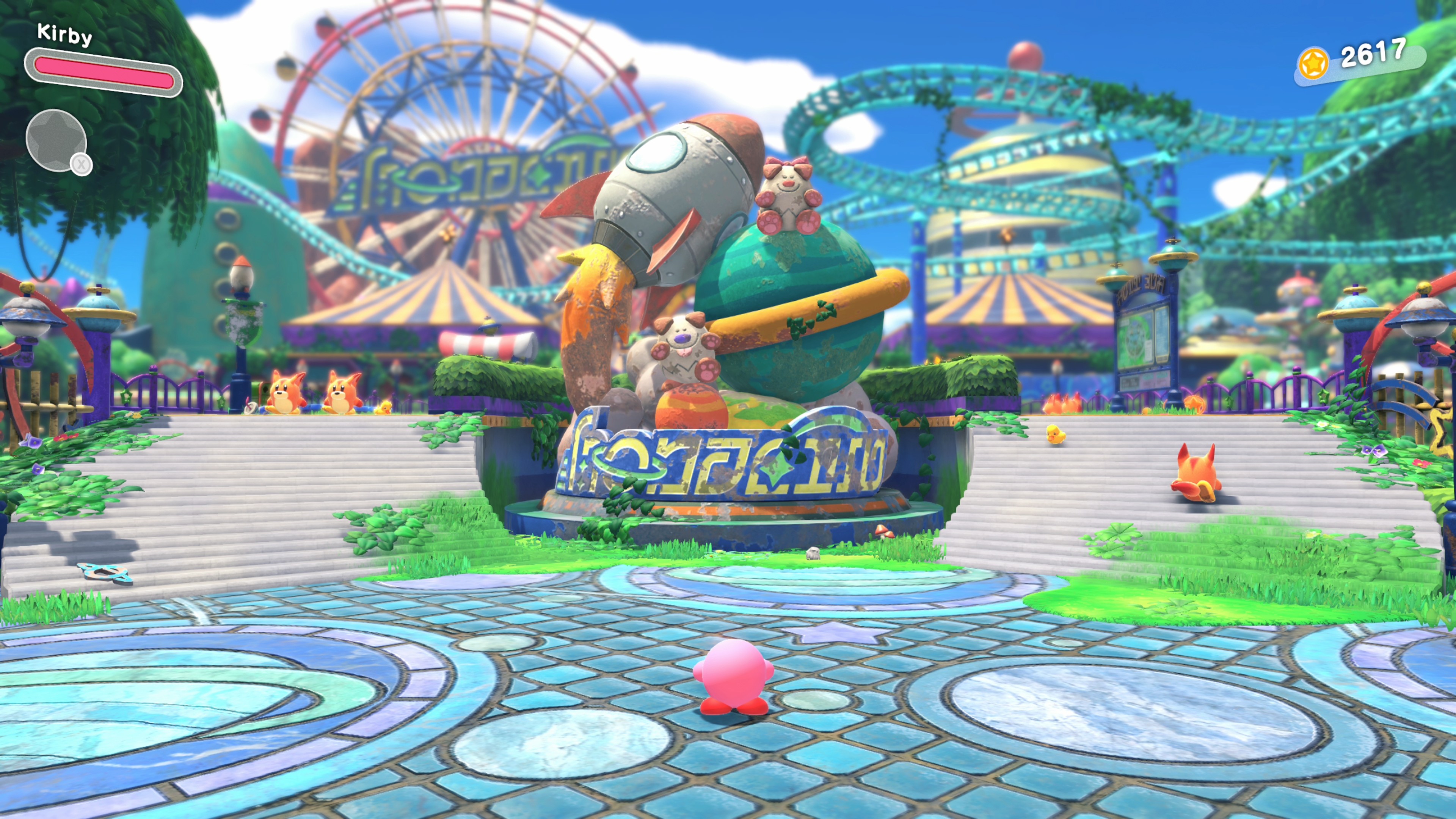
Download the screenshot on the left-hand side | Download the screenshot on the right-hand side
The additional levels can be unlocked in pairs in each of the original six worlds once you’ve completed the respective area. The beautiful reflections in the icy constructions appearing levels veterans are already familiar with are particularly impressive. Nintendo appears to be using Screen Space Reflections here. The image also appears to be significantly more stable compared to Switch 1, thanks to the improved anti-aliasing. Subpixel Morphological Antialiasing, better known as SMAA, deals with most of the shimmering edges, if not all. On Switch 1, we can see a similar pattern like we did with Super Mario Galaxy 1 and 2. While the game looked crystal clear on the Switch’s 720p screen in handheld mode, the game’s visual shortcomings and the console’s limitations became blatantly obvious on larger screens. Things are different on Switch 2: The resolution has been bumped from a dynamic 720p/1080p (handheld/TV) on Switch 1 to up to 1080p/1440p on the Nintendo Switch 2 Edition. The improved texture filtering also contributes to the nicer visuals. Surfaces are slightly less blurry, but the game still makes use of the assets from the Switch 1 version. While shadows look slightly sharper, pop-in is still an issue on Switch 2.
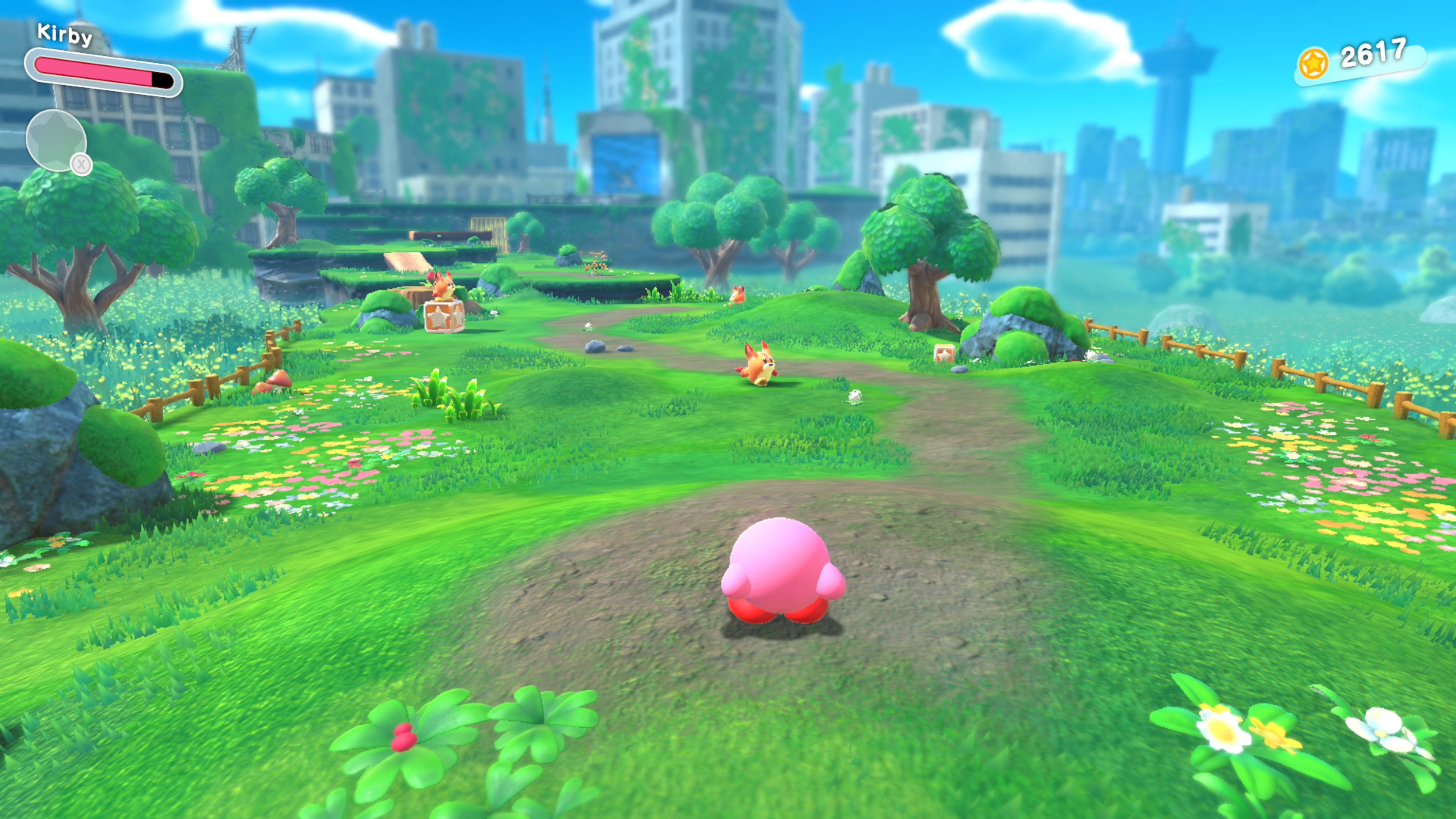
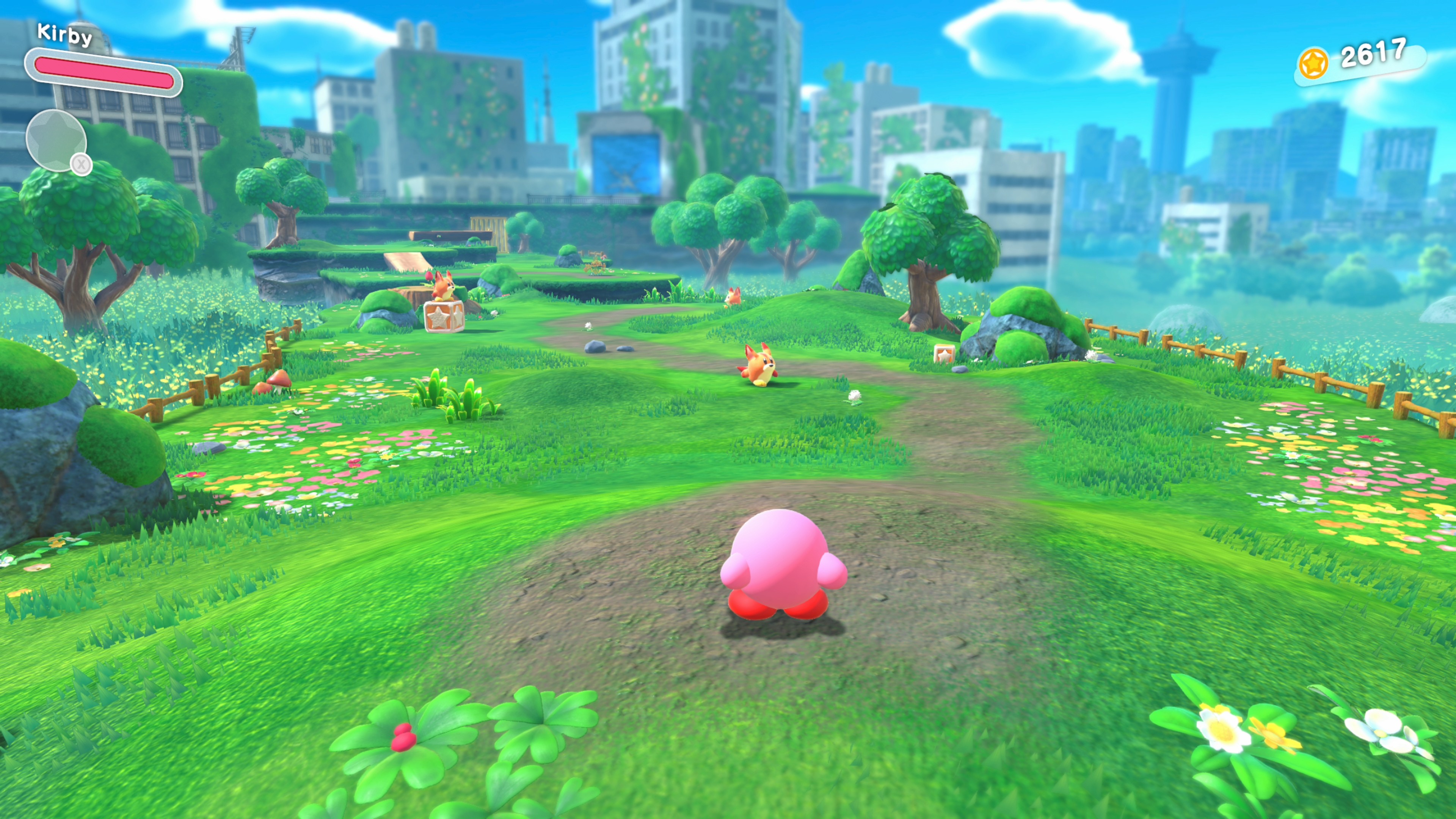
Download the screenshot on the left-hand side | Download the screenshot on the right-hand side
Arguably the biggest addition to the Nintendo Switch 2 Edition of Kirby and the Forgotten Land is doubling the frame rate from 30 to 60 FPS. On Switch 2, Kirby sails smoothly with Arc Mouth over the heads of Awoofys and Cozys, or skates around their crystal siblings and sinister Galactals in the levels the Star-Crossed World expansion adds. Our main objective is to find and rescue Starries in distress. The frame rate remains consistently stable, even when using the new Mouthful abilities like the spring and the gear, which allow us to explore new areas in creative ways. The pre-rendered cutscenes continue to play at 30 FPS, just like on Switch 1.
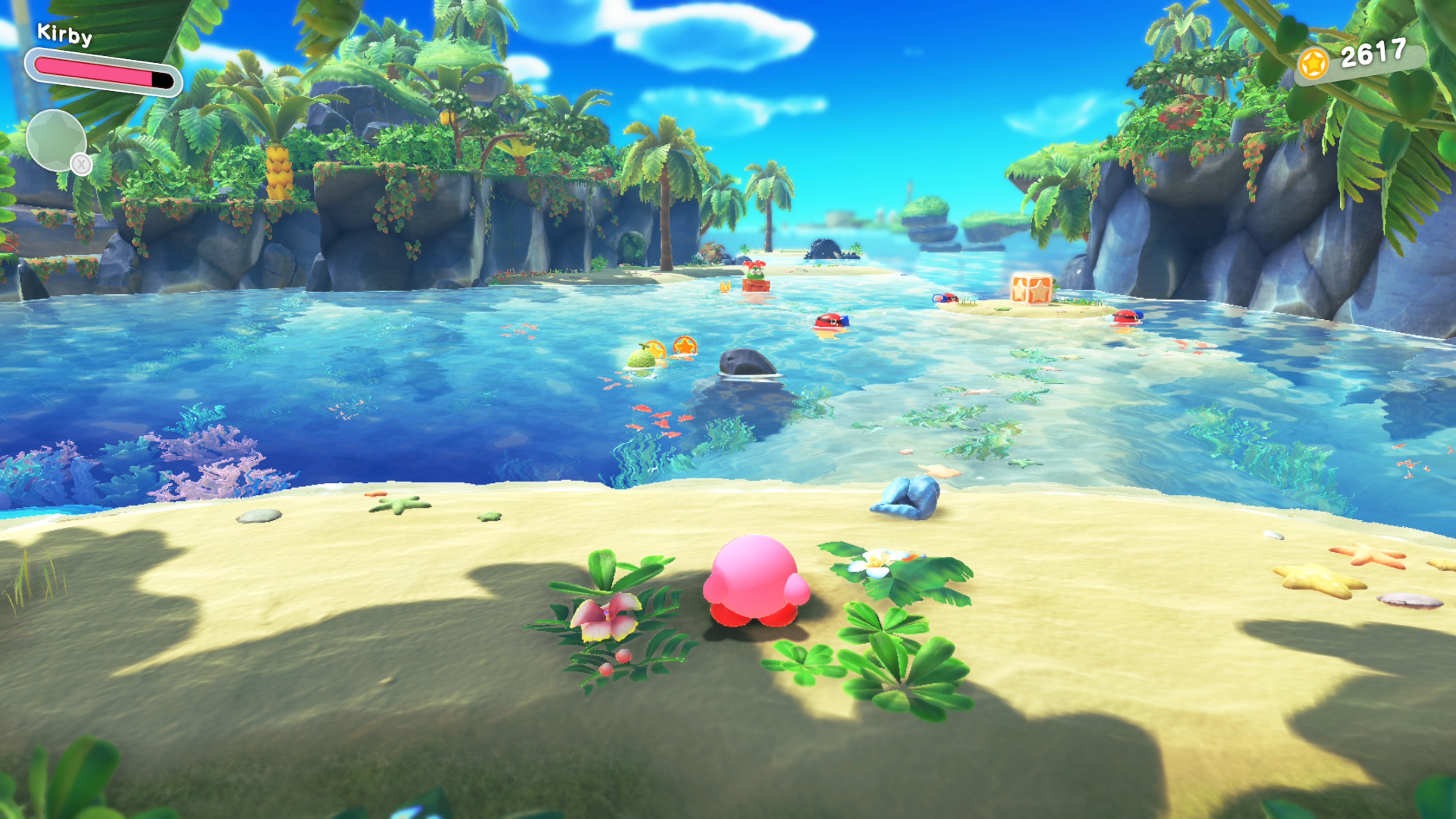
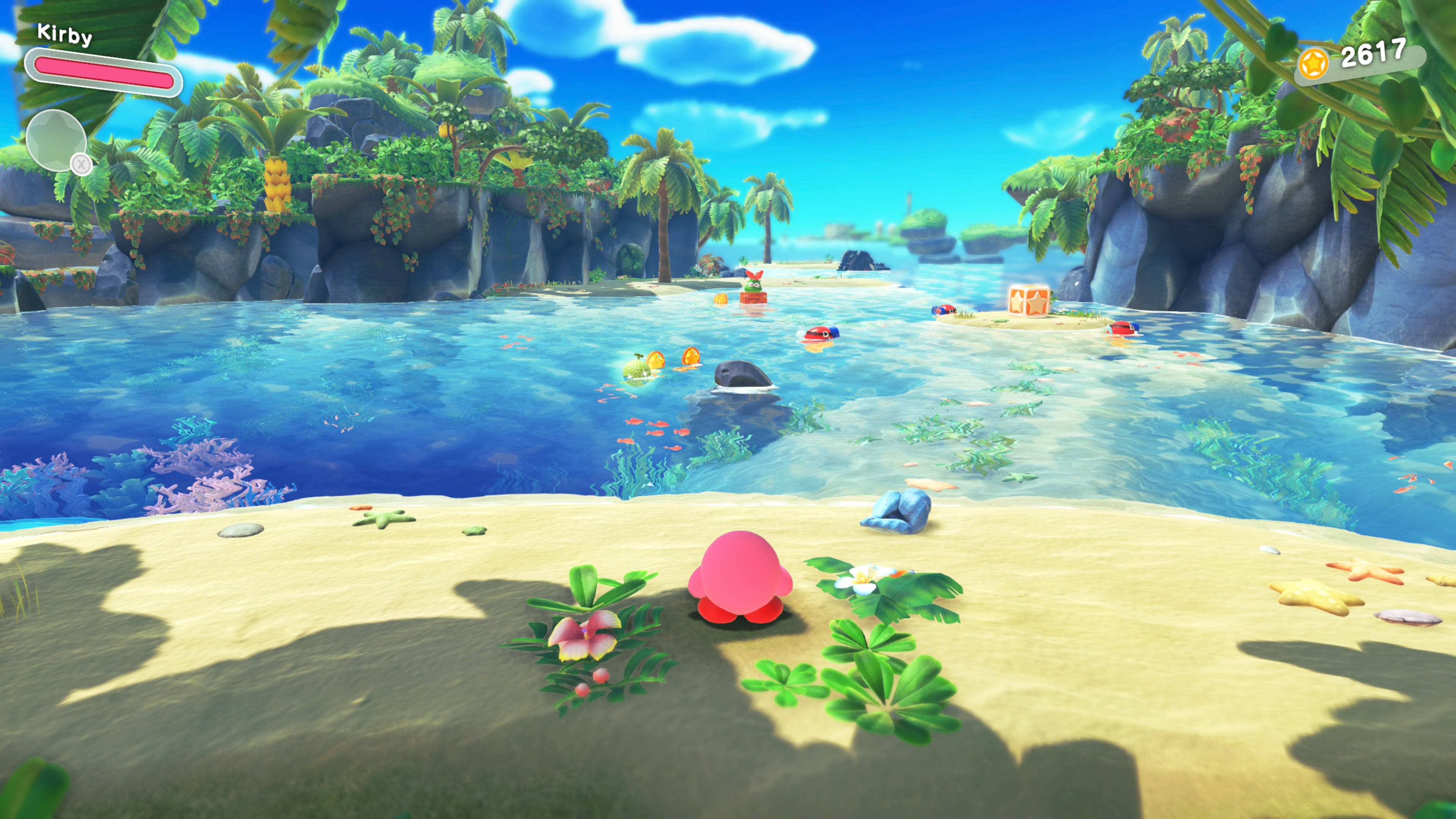
Download the screenshot on the left-hand side | Download the screenshot on the right-hand side
Kirby and the Forgotten Land – Nintendo Switch 2 Edition + Star Shard World expands upon the originally already excellent platformer with a dozen sophisticated levels that will be challenging even for veterans, and adds significant value by doubling the frame rate to 60 FPS. While Star-Crossed World offers a (n)ice new facete and fresh challenges, you’ll have seen everything it offers in a couple of hours. If you’ve already completed the game on the original Nintendo Switch, the upgrade may not offer much for you. Though, if you’re into platformers and haven’t played Kirby and the Forgotten Land, we highly recommend to take a stab at the Nintendo Switch 2 Edition.
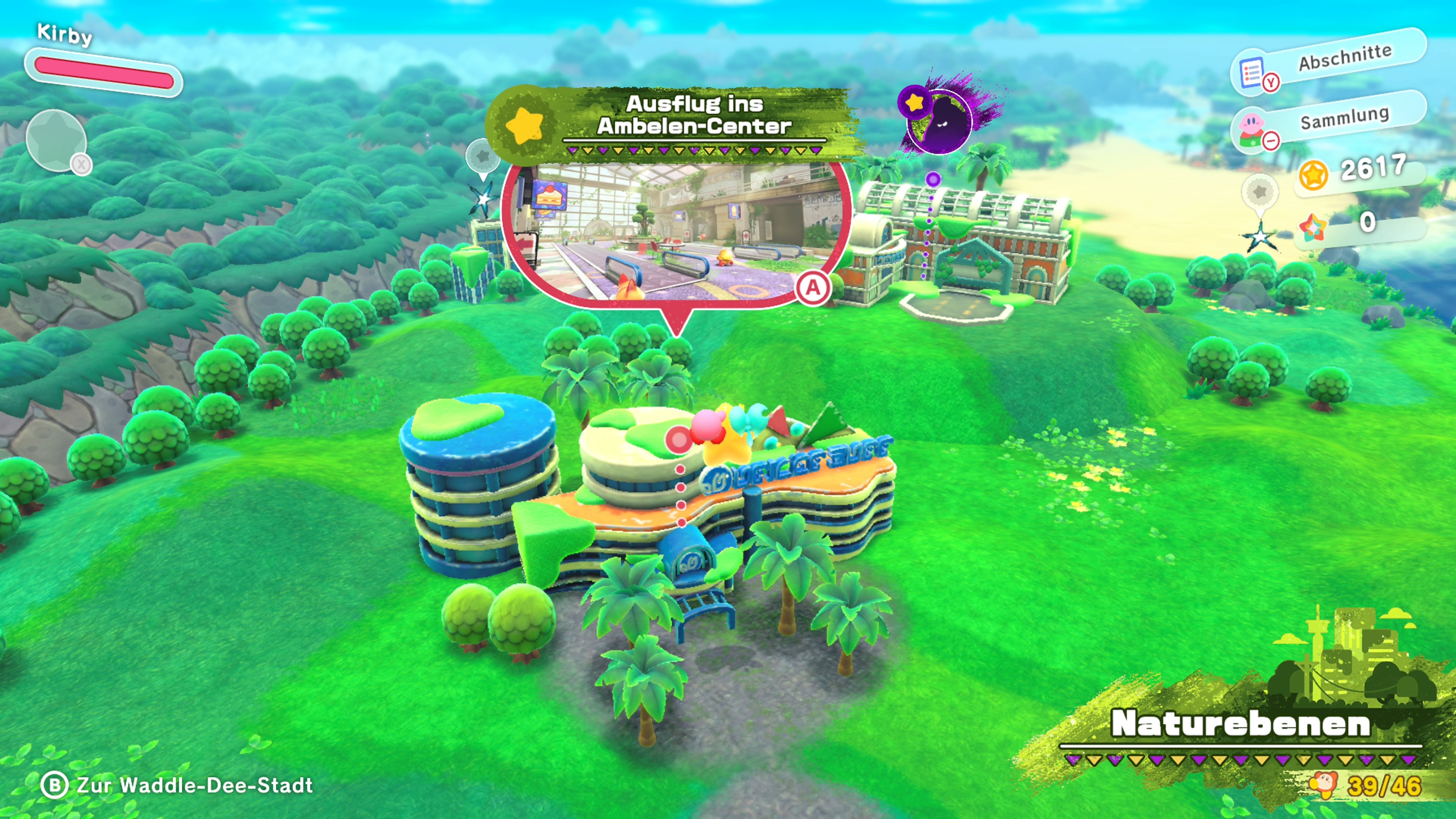
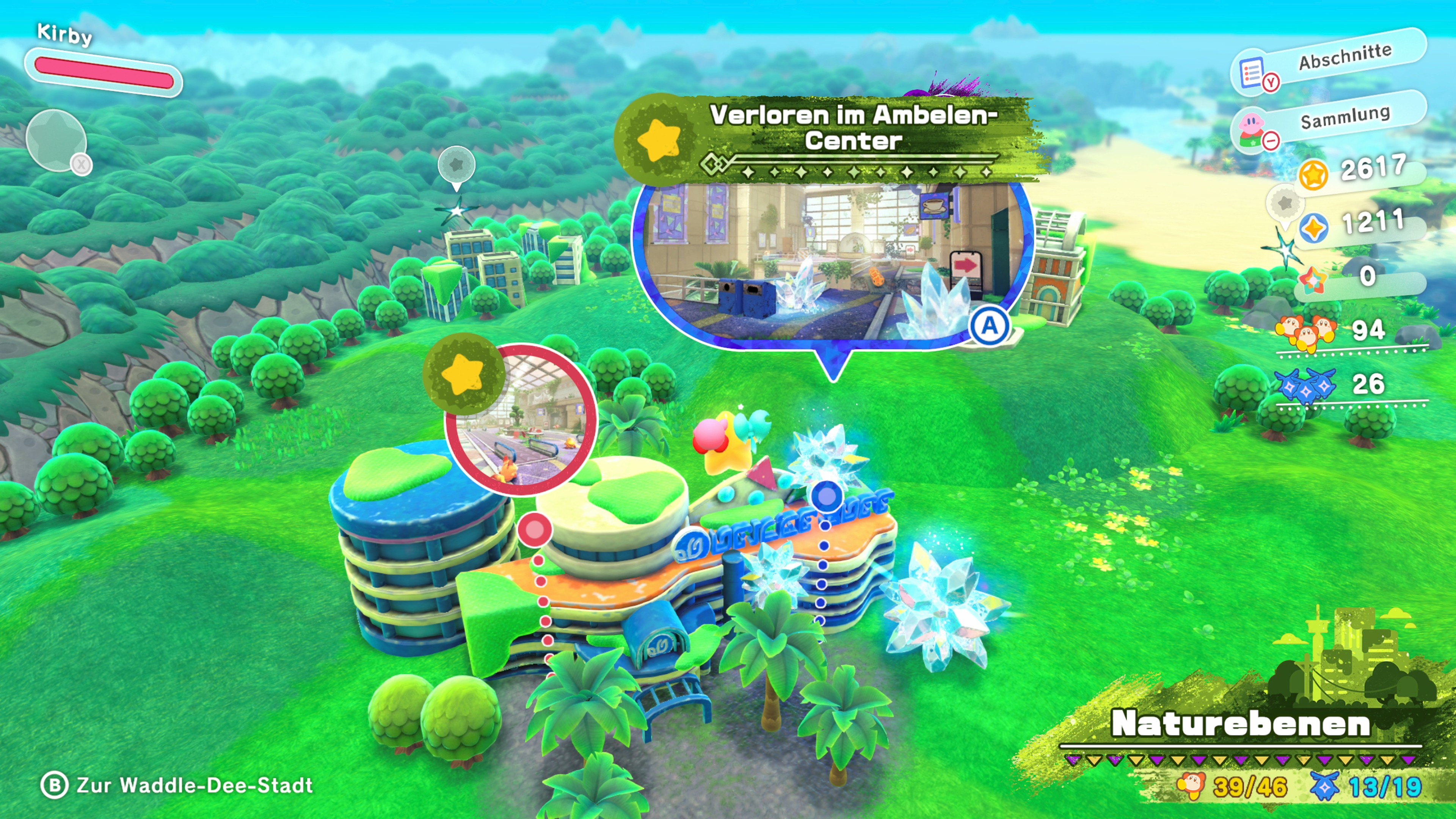
Download the screenshot on the left-hand side | Download the screenshot on the right-hand side
Marvelous provided us with Rune Factory: Guardians of Azuma for Nintendo Switch 1+2 and Nintendo supplied us with Kirby and the Forgotten Land for Nintendo Switch. While the screenshots we captured were uncompressed for comparison purposes, we had to compress them slightly due to their file size (90 percent image quality).

